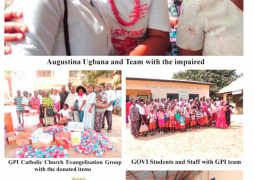Health officials at the National Malaria Control Programme (NMCP) last week organized a two-day sensitization for members of the media on malaria prevention and control, covering malaria situation in the country held at the NMCP office in Kanifing.
The sensitization was among others aimed at increasing the knowledge of members of the media fraternity on the latest stride been made in the fight against malaria. at ceremony held at the conference hall of NMCP.
In his presentation on the topic "Malaria Situation in the Gambia," the Deputy Programme Manager, National Malaria Control Program Balla Kandeh said Malaria is the leading cause of morbidity and mortality especially among children under five years and pregnant women. He stated that the highest rates are recorded in the rural area with intense transmission during the period.
"More severe cases are recorded in the rural area in URR, the east most part of the country than other parts," he told health journalists.
Dilating on the Malaria burden, Mr. Kandeh said malaria is endemic with highly seasonal variations, adding that transmission is intense with 80% of severe cases occurring in October and November. "Plasmodium falciparum is the dominant parasite and resistance to insecticide has not yet been reported. Malaria account for 78% of all OPD visit, 58% of in patient admission (DOSH 2004)," he stated.
He said the reasons for malaria decline in the country is due to the scaling up of interventions with support from Global Fund and other partners, use of ITNs for the vulnerable (culture of net use), and intensive social mobilization for Malaria targeting women and male community leaders.
On the challenges, he highlighted high cost of ACTS, sustainability of interventions, high attrition of trained health staff from public facilities, weak health systems to adequately cope with challenges.
For his part, Momodou Kalleh, an official at NMCP who dilated on Introduction to Monitoring and Evaluation said monitoring is the routine process of data collection and measurement of progress toward program objective. Evaluation, he added, is the use of specific study designs and special studies to measure the extent to which changes in desired heath outcomes are attributable to a program intervention.
Speaking on the rationale behind Monitoring and Evaluation, Kalleh said it helps to make informed decisions regarding on going programs, noting that they also facilate effective and efficient use of resources and thus determine whether a program is right on track and where changes need to be considered.
He told journalists that M&E help stakeholders conclude whether the program is a success, saying that it also preserves institutional memory.
Mr. Alassan Jobe, also a health official said malaria is a serious health problem, noting that it affects between 300-500 million people and is a leading cause of infant and child mortality.
Also dilating on the primary intervention, Jobe said the WHO/GMP recommends three primary intervention for effective malaria control, adding that these interventions must be scale up to achieve MDGs goals.
He said Insecticide Treated Bed Nets have been proven to be effective against a range of other disease vectors such as leshmaniasis, Japanese encephalitis and lymphatic filariaseis.
Read Other Articles In Article (Archive)
National Volleyball Team leaves for Sierra Leone
Jul 1, 2011, 12:26 PM
Stop This Genocide!
Jan 6, 2009, 7:00 AM



